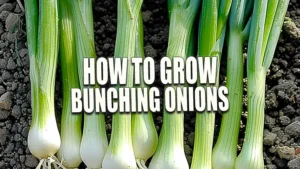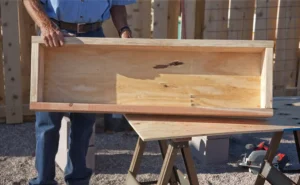When Is the Best Time to Spray Fruit Trees
- October 3, 2024
- 0 comment
Knowing when to spray fruit trees is essential for maintaining their health and ensuring a bountiful harvest. Spraying at the right time not only protects your trees from pests and diseases but also helps minimize harm to beneficial insects.

The best time to spray fruit trees depends on several factors, including the tree type, local climate, and specific pest or disease threats. However, following a fruit tree spraying guide can simplify the process, ensuring a healthier and more productive growing season. Proper timing and care can make all the difference between thriving trees and ones struggling to produce.
Understanding Fruit Tree Spraying
Fruit tree spraying is an essential practice to safeguard your trees from pests, fungal diseases, and infestations. Applying pesticides, fungicides, or horticultural oils protects both the tree and its fruit, ensuring stronger growth and higher yields. Following a well-structured fruit tree spraying guide ensures the right application at the right time for optimal results.
Factors Affecting Spraying Timing
- Growth Stage of the Tree: Spraying should align with the tree’s growth stages to maximize effectiveness. The four primary stages include:
- Dormant Stage: Late fall or winter, after trees lose their leaves and before spring growth. This is ideal for applying dormant oil spray for trees to target overwintering pests.
- Pre-bloom: When buds swell but haven’t yet opened. Protective sprays can help manage early pests.
- Bloom: During flowering and pollination. Caution is key here to avoid harming pollinators.
- Post-bloom: After flowers fall and fruit begins developing. This stage is crucial for fruit tree pest control.
- Climate and Local Weather: Local weather greatly impacts your tree spraying schedule. In cooler climates, trees remain dormant longer, offering flexibility for applying dormant oils. In warmer climates, adjust your schedule as the growing season starts earlier. Avoid spraying on windy or rainy days to prevent drift or wash-off.
- Pest and Disease Cycles: Understanding pest and disease life cycles in your area is vital. For example, many insect eggs hatch in early spring. Applying a dormant oil spray for trees just before bud break can smother overwintering insects and eggs, reducing future infestations. Properly timed sprays ensure effective protection throughout the growing season.
Best Times to Spray Fruit Trees

- Dormant Season (Winter):
The dormant season, when trees are not actively growing, is ideal for applying dormant oil spray for trees. This preventive measure targets overwintering pests like aphids, mites, and their eggs. The oil coats and suffocates them before they can hatch in spring, providing an early start to pest control. - Pre-Bloom Stage (Late Winter to Early Spring):
As buds swell but haven’t yet opened, it’s the perfect time to apply fungicides to combat diseases like apple scab, powdery mildew, or peach leaf curl. For pest-prone trees, insecticidal sprays can address issues with scale or aphids. This stage is a key component of an effective fruit tree spraying guide. - Bloom Stage (Spring):
Spraying during bloom is often avoided to protect pollinators like bees. If necessary, choose pollinator-safe options such as neem oil or Bacillus thuringiensis (Bt), and apply sprays in the evening when bees are less active. This ensures that the pollination process, critical for fruit development, is not disrupted. - Post-Bloom (Early Summer):
After the petals fall and fruit begins to develop, it’s time to address pests like codling moths, which target apples and pears. Fungicides can also be applied to manage diseases like fire blight or brown rot. This stage is essential for fruit tree pest control, ensuring healthy fruit production and minimizing pest damage throughout the growing season.
Types of Sprays and Their Impact

Dormant Oils
Dormant oils are highly effective when applied during the dormant season. They work by suffocating overwintering insects such as aphids, mites, and scale, making them a crucial part of a fruit tree pest control strategy. These oils are safe for most fruit trees and are an excellent preventive measure.
Fungicides
Fungicides help manage fungal diseases, which thrive in damp conditions. Apply these sprays during early spring or late summer when diseases like apple scab, peach leaf curl, or powdery mildew are most active. Copper-based fungicides are particularly effective and widely used. Incorporating fungicides into your fruit tree spraying guide ensures timely disease management.


Insecticides
Insecticides are designed to target specific pests, such as codling moths or aphids, based on their life cycles. Proper timing is critical; spraying too early or late reduces effectiveness. By understanding pest behaviors and using targeted solutions, you can protect your trees without unnecessary chemical use, aligning with an eco-friendly tree spraying schedule.
Practical Tips for Effective Spraying
- Read Labels Carefully: Always adhere to the manufacturer’s instructions for safe and effective use of sprays. Misusing products can damage your trees, harm beneficial insects, and negatively impact the environment. This is especially important when using dormant oil sprays for trees or other chemical solutions.
- Use the Right Equipment: Invest in a reliable sprayer that provides even coverage. Uneven application reduces the effectiveness of sprays and can leave parts of your tree vulnerable to pests or diseases. A high-quality sprayer ensures your fruit tree pest control efforts are thorough.
- Monitor Tree Health: Inspect your trees regularly for signs of pests or disease. Early detection allows you to act quickly, applying the appropriate sprays at the right time to prevent issues from escalating. Monitoring aligns with a proactive tree spraying schedule for healthy fruit production.
- Timing is Key: For optimal results, spray in the early morning or late afternoon when temperatures are cooler and winds are calm. This minimizes spray drift and ensures the product stays on the tree, enhancing effectiveness. Proper timing is a cornerstone of any successful fruit tree spraying guide.
Conclusion: Timing is Everything
Spraying fruit trees at the right time is essential for protecting them from pests and diseases while ensuring a healthy, productive harvest. By aligning your efforts with the tree’s growth stages applying dormant oil sprays during winter, targeted fungicides and insecticides in early spring, and timely post-bloom treatments you can create a comprehensive tree spraying schedule. Additionally, paying attention to local weather and understanding pest cycles ensures your sprays are effective and environmentally conscious.
With careful observation and proper timing, your fruit trees will thrive, rewarding you with abundant, high-quality fruit for years to come. Incorporating these practices into your fruit tree spraying guide will set you up for success season after season.
Frequently Asked Questions (FAQ)
- What happens if I spray fruit trees at the wrong time?
Spraying at the wrong time can harm the tree or reduce the effectiveness of the treatment. For instance, applying pesticides during bloom can harm pollinators like bees, while spraying too late may not protect against pests or diseases effectively. - How often should I spray my fruit trees?
The frequency depends on the type of tree and the specific pests or diseases you’re combating. Typically, fruit trees are sprayed 3-4 times a year: during the dormant season, pre-bloom, post-bloom, and as needed for pest management. - When Is the Best Time to Spray My Fruit Trees?
The best time to spray fruit trees is during their dormant season (late winter to early spring) before buds swell. This helps control overwintering pests and diseases. - What Month Do You Spray Fruit Trees?
Typically, fruit trees are sprayed in late February to March, depending on your climate, to manage pests and diseases before new growth begins. - What Time of Year to Spray Fruit Trees?
Spray fruit trees during the dormant season (late winter/early spring) and throughout the growing season as needed, with sprays timed to the tree’s growth stages. - Do You Spray Fruit Trees in the Fall?
Yes, a fall spray after leaf drop helps control pests and fungal issues. Use a dormant oil or copper spray before winter sets in. - Spraying Fruit Trees Before Rain?
Avoid spraying fruit trees right before rain, as the rain can wash away the spray, reducing its effectiveness. Choose dry, calm days for the best results.

Benjamin Brooks
Forestry AuthorGreetings! I'm Benjamin Brooks, and my journey over the past 15 years has revolved around the fascinating realms of content creation, expertise in snow clearing, and the intricate world of lumberjacking and landscaping. What began as a simple curiosity about the natural world and heavy machinery has evolved into a passionate profession where my love for crafting words intertwines seamlessly with my lumberjacking and garden skills.













Leave your comment